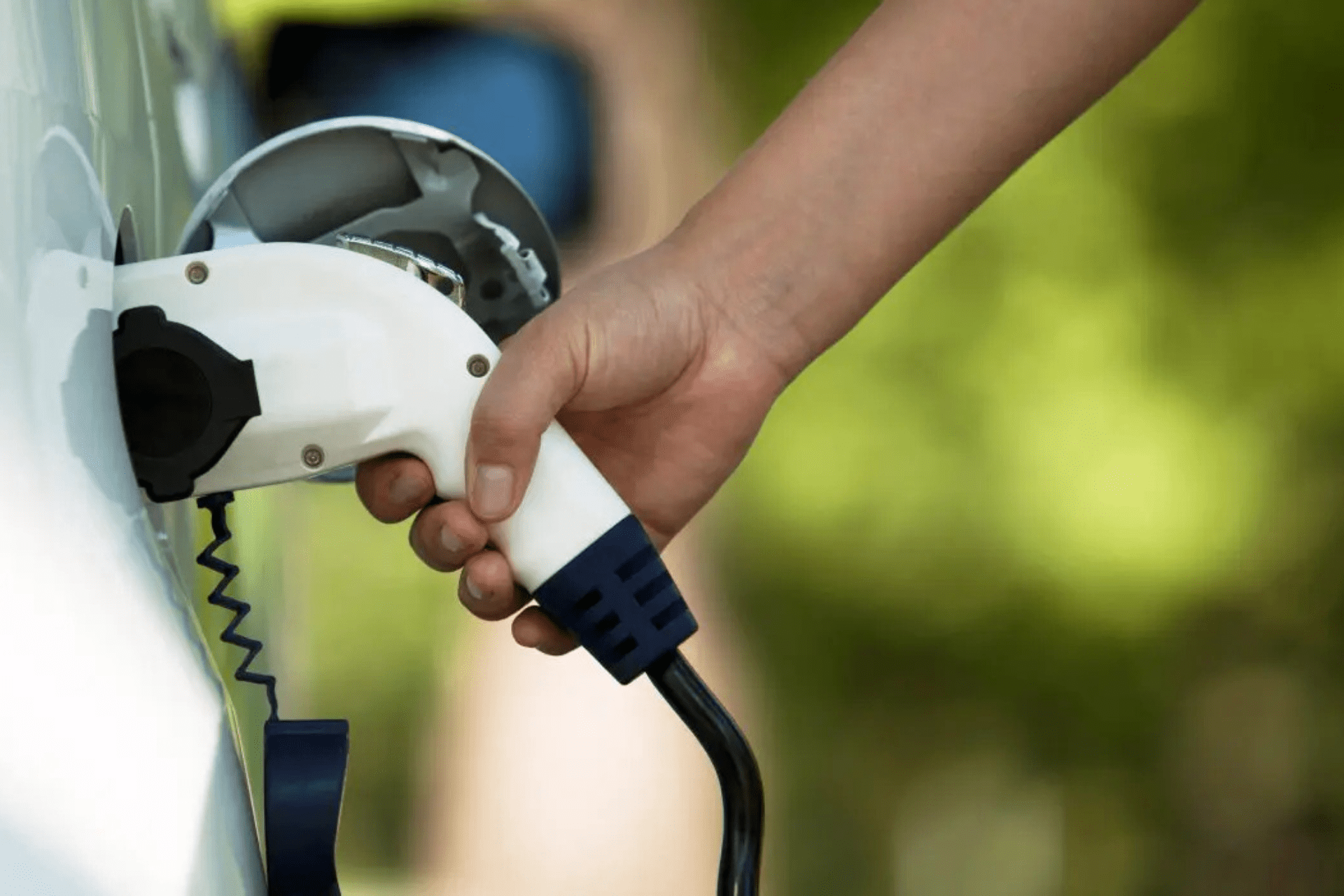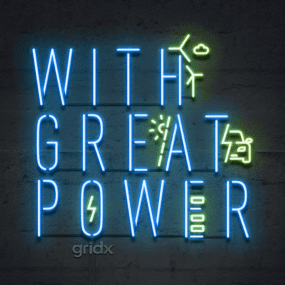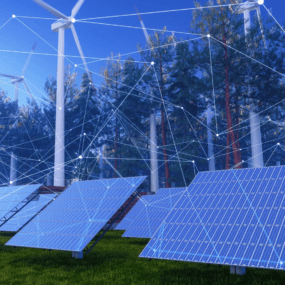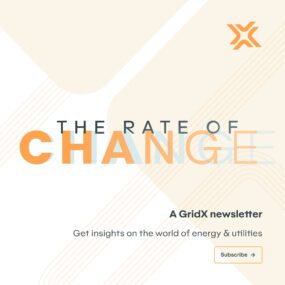How Utilities Can Ensure Everyone Benefits from Affordable Electrification
To achieve our decarbonization, air quality, and climate goals, we must electrify appliances and vehicles.

To achieve our decarbonization, air quality, and climate goals, we must electrify appliances and vehicles.

By Matt Ross, GridX Senior Product Manager
It’s easy to say but hard to do. Technology costs can be a major hurdle for many homes and businesses. Low- and medium income (LMI) households especially are likely to be deterred by upfront capital costs and feel a higher energy burden as an increasing portion of their income goes to electricity bills.
Consider an average electric car price of $66,000 is similar to that of a median household income in the United States. And an electric heat pump can range from several hundred to several thousand dollars more expensive than a traditional AC unit. But that’s only part of the story.
To complete the story, it’s important to consider both up-front rebates and long-term ownership costs. Rebates and incentive programs alleviate the initial hurdle, and communicating the long-term savings of electric heat pumps relative to air conditioners and gas furnaces provides the insights needed for homeowners to make an informed decision.
Affordable electrification adoption
Renewable energy sources are continuously replacing coal and gas-fired generation. In fact, renewable energy statistics project up to 35% of global power generation will be from renewable sources by 2025.
For instance, heat pumps can reduce electricity usage for heating and cooling by up to 50%, creating savings of 20-70% on bills. Across their lifespan, heat pumps will have lower ownership costs than air conditioners and gas furnaces, therefore saving people money.
Likewise, with the federal government as well as local governments incentivizing transportation electrification, and more automakers ramping up electric vehicle sales, there will be an increasing number of new EV drivers.
While energy costs for both fossil fuel and electricity vary over time and can be more expensive in states like New York and Massachusetts, one general estimate is that it costs $674 to charge an EV for a year if the owner only uses home chargers rather than public charging stations. This is perhaps especially attractive for EV owners while the public EV charging infrastructure catches up with demand. Meanwhile, the average annual cost to refuel an internal combustion vehicle is nearly $1,900.
With the lower ownership costs of renewable energy and electrification technologies compared to their fossil fuel counterparts, low- and medium income customers are most likely to realize the financial benefits — not to mention the benefits of improved sustainability in the fight against climate change.
Renewable energy statistics from the U.S. Energy Information Administration (IEA) show that up to 35% of power generation worldwide will be through renewable sources by 2025. But if customers aren’t aware and don’t know how to access programs to assist with the upfront costs, they are less inclined to participate.
With around 50 million low-income households across the U.S., communicating adoption and ownership costs in dollars and cents is critical to achieving decarbonization goals and enabling an equitable energy transition.
A trailblazing utility
At the recent E Source conference, I was able to hear from Sacramento Municipal Utility District (SMUD) on their efforts to assist LMI customers. SMUD is the sixth largest community-owned utility in the United States, serving 645,000 customers. It has a zero-emissions goal of 2030 with rates among the lowest in California and has been conscientious of financial burdens carried by their under-resourced customers.
With its service territory in one of the nation’s priciest housing markets, with two-thirds of Americans living paycheck to paycheck and rising gas prices hitting communities of color and rural households in the US hardest, SMUD has segmented under-resourced customers to identify low/medium income customers and vulnerable commercial customers, and develop targeted programs and initiatives.
They have developed various initiatives with the intent of creating an inclusive and equitable clean energy future. This includes making clean energy technology affordable by providing financial assistance, ensuring equitable access and making sure its community understands both the company’s vision and how it can benefit from it.
Specifically, SMUD is providing incentives and rebates to customers to convert gas appliances or replace electric appliances by providing rebates for an induction cooktop (up to $750), a heat pump water heater (up to $2,500), or heat pump HVAC ($3,000). Such rebates have made the adoption costs of such technologies low to zero. Their piloting of “Energy Saver Bundles” further offers eligible income customers in-home assessments and free electric vehicle chargers to reduce energy use, lower energy bills, and help them live in cleaner and healthier homes.
Calculating bill impacts of going electric to LMI customers in dollars and cents
As I sat and listened to that presentation, I was really inspired about the progress and commitment they’ve made. It also got me thinking about how we can drive even more change and increase adoption in electrification technologies.
Big data analytics can play a significant role. Using historical electricity usage patterns, load modifier scenarios of electrification adoption, and rate and tariff technology, we can calculate the financial impacts of a customer’s electrification journey, making it even easier to say yes and connect with available rebates and incentives. A few ways to put this into practice include:
1. Identifying and engaging LMI customers
This includes analytics identifying whether customers are on the best rate considering their usage patterns, and if load changes upon adopting EVs, heat pumps, etc. would make a different rate plan more financially viable.
2. Developing detailed and personalized financial scenarios on ownership costs of electrification technologies versus their fossil fuel counterparts
Full financial scenarios can be developed by incorporating discount programs and tax credits to further alleviate upfront capital costs and ownership costs. By utilizing the right set of tools, energy providers can communicate the total cost of ownership to customers in dollars and cents to empower and inform them to make the best choice for their home or business.
3. Communicating how behavior change, critical peak pricing, or demand response programs can further save customers money
By using smart meter data, utilities can provide customers personalized insights on how certain behaviors or program participation impacts them financially. This includes communicating costs of charging an electric vehicle at night rather than in the afternoon, how energy efficiency program participation can reduce the amount of energy consumed and translate into bill savings, or how demand response program participation may lead to cash-back.
Enrollment in a dynamic pricing structure like time-of-use (TOU) rates can lead to significant customer savings and help utilities meet strategic objectives.
Personalized analytics around smart meter data may further render electrification feasible for a customer and firmly posits the utility into the role of trusted energy advisor.
Affordable electrification and the clean energy future
SMUD is not alone in embarking upon a clean energy pathway. Initiatives, pledges and pressure to decarbonize are mounting, ranging from President Biden’s Inflation Reduction Act (IRA) earmarking billions of dollars for tax credits, household electrification, and EV adoption incentives, California’s ban on new gasoline-powered cars as of 2035, and 81% of US customers served by an electric utility with a carbon reduction target.
But SMUD’s trailblazing commitments to its LMI population are at the heart of what a clean energy transition needs to look like. With a population of 50 million people across the US, all utility service territories encounter under-resourced customers in need of better rates, programs, and rebates to ensure that they do not carry a disproportionate energy burden.
Big data analytics will play a significant role in utility rate and program design, and in ensuring that LMI customers overcome the financial hurdle of technology adoption. Leveraging smart meter data enables the utility to segment their LMI customers, develop personalized financial insights on ownership costs of electrification technologies, and communicate to customers which further behavioral actions lead to savings.
Designing better LMI programs and calculating the impacts of technology implementation in dollars and cents will go a long way toward ensuring everyone benefits from affordable electrification adoption.

How utilities can help sell more electric vehicles
Austin Energy’s Karl Popham is on a mission to improve the EV buying experience.




